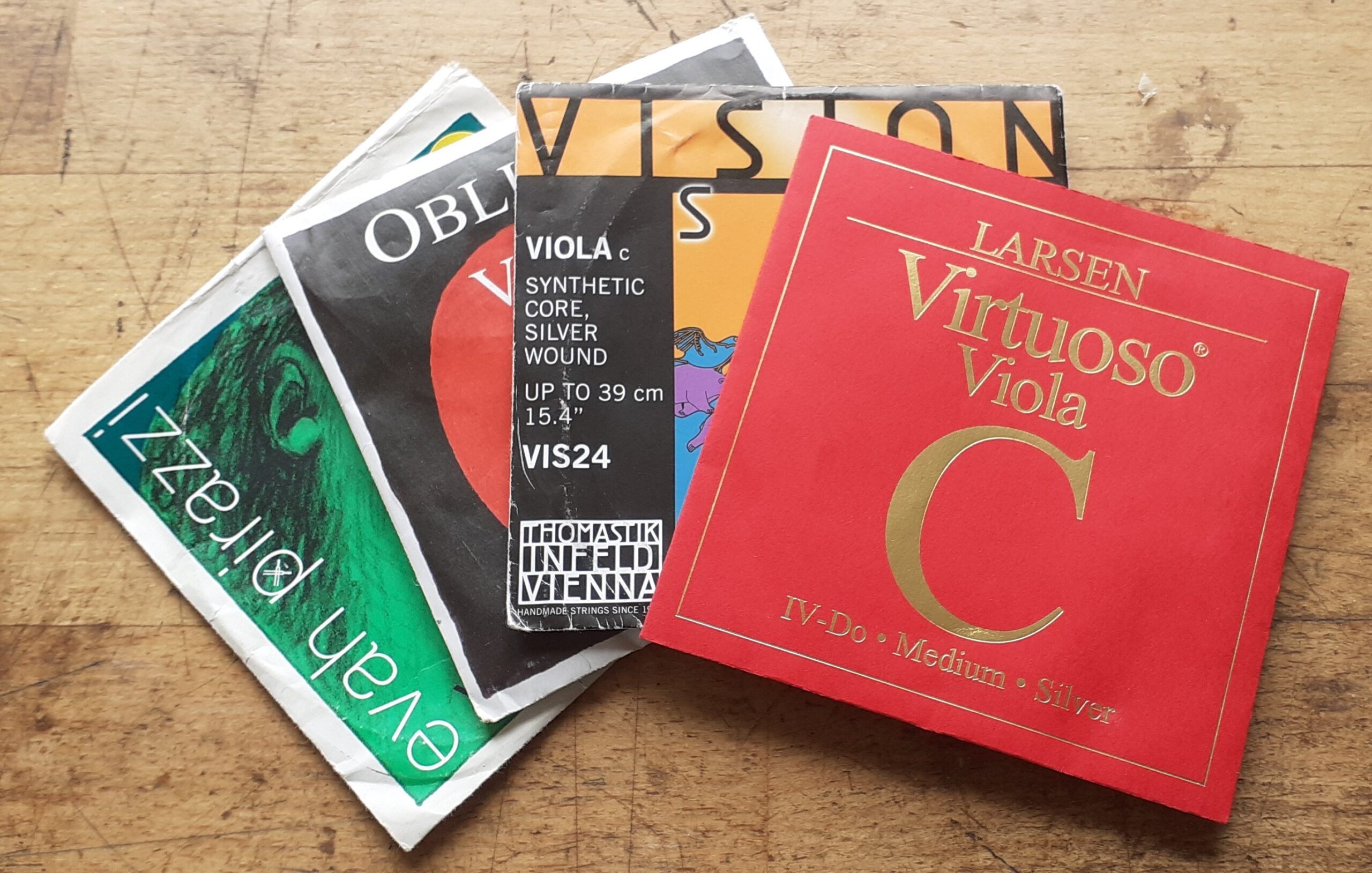
Viola C Strings
June 2022
Yesterday I decided to do a bit of work on three violas. The largest one, an Andrea Guarneri model, needed a longer soundpost because the response had become a little slow and the sound was not as big as it should be. I had tried tightening the old soundpost, and it helped on the top strings, but it made the C string worse; basically, I needed a tighter fitting soundpost in the original position.
Besides changing strings, adjusting the soundpost is the most common way af altering the sound. Fitting a longer soundpost after a few months is a common thing to do with a new viola, fitting the second one being easier than the first because you can cut the end of the new one to the same angle as the old one. As luck would have it, the new post fitted first time and the sound is back to how it should be.
With the next viola, all I needed was a new C string. The C string on a viola is the hardest to get right, and it is one of the key factors in choosing the models I make. But whatever model you make, there is an intrinsic problem in that a lower string, ideally, should be longer than a treble string. If not, you have to increase the thickness and weight of the string, which is why viola C strings are often significantly thicker than the G strings. This viola is smaller than the Andrea Guarneri model, and has Evah Pirazzi Gold strings on it, which I find tend to work well on violas with a short string length. I took it out of the case, played it quickly to keep the sound in my head as a comparison, and took off the C string. Many viola players use Spirocore C strings, but although are heavier and provide plenty of resistance to the bow, to me they always seem a bit harsh and wiry, especially under the ear. Anyway, I didn’t have any in the box. I did, however, have some Vision Solos, made by Thomastik. These strings require a lot of energy to be put through them, but in return you get a lot back. I don’t usually like them on violas, I tend to want an instrument that ‘willingly allows’ the sound out, rather than forcing it out. For the violin and a soloistic style of playing, however, they do suit some people. So I put that string on and it sounded great, with a smooth transition in quality between the G and C, with more solidity and flexibility under the bow. I demonstrated the viola to my wife, who asked which one it was, and it was only then I realized I had picked up the wrong viola, similar varnish, a smaller Bellosio model. Oops! Never mind, it was sounding better.
So then I went to the right case and got out the viola which I really wanted to swap strings on, a 15 ½” Pietro Guarneri-inspired instrument. I tried the same Vision Solo string, and there was an improvement in response and quality of sound, but it did sound harsh, significantly different from when it was on the Bellosio viola. In my box of strings, I also have some Larsen Virtuoso strings. I always think of Larsen strings as being smooth and well behaved, a little two dimensional perhaps, a little boring, but good quality and long lasting, and they work well on some instruments, including my own violin. But the Virtuoso strings should be punchier, I hoped, so I put that C string on. Compared with the Vision Solo, this string was just as strong, but lacked the harshness, smoother in sound but also quick on the response, and it is also a good match with the other strings.
So all I needed to do then was to put the Vision string back on the Bellosio model viola, and now all three violas are sounding as they should.